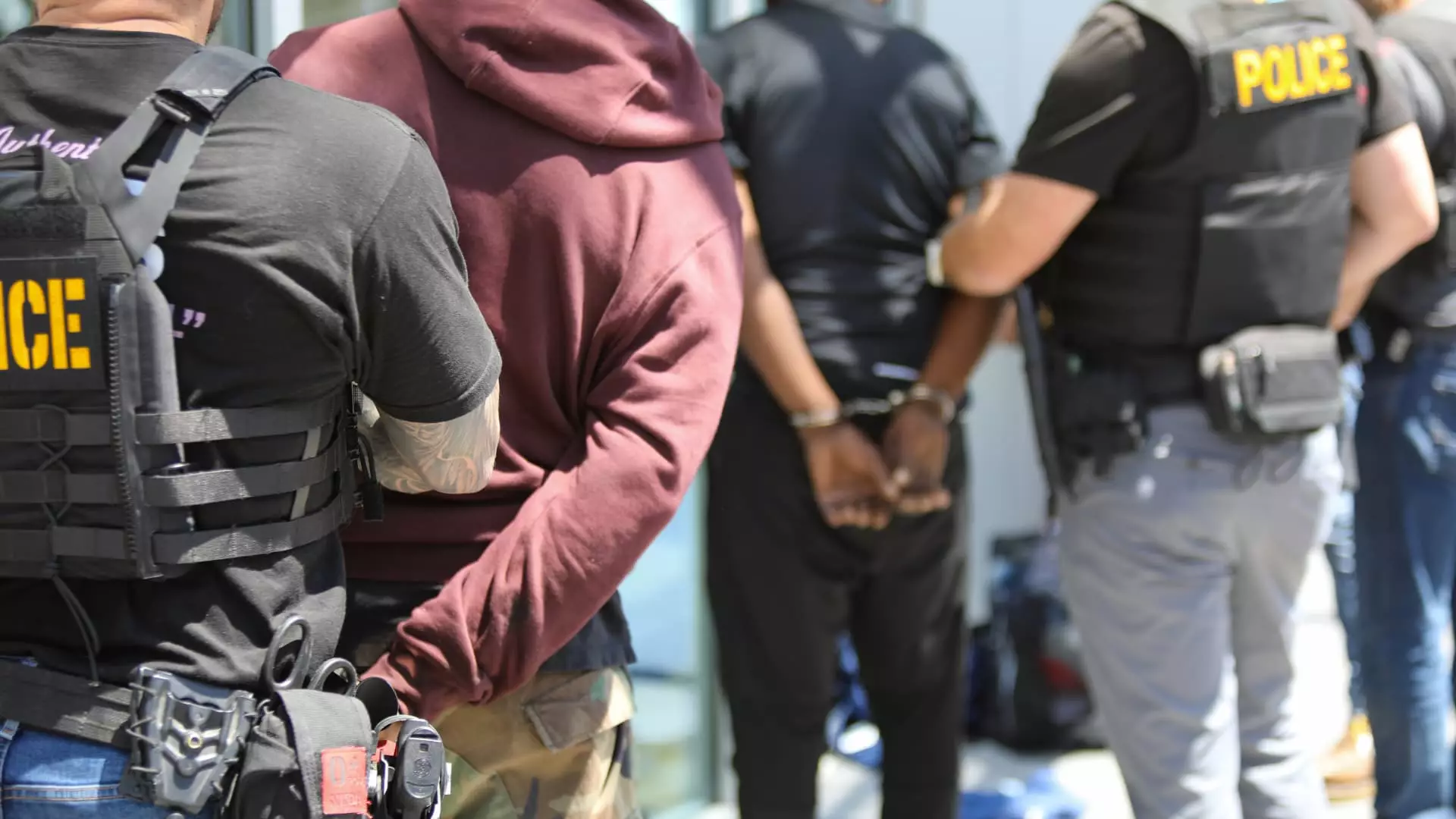In recent months, America’s struggle against retail crime has reached an alarming crescendo, culminating in what authorities describe as the nation’s first coordinated crackdown on organized retail crime. Undertaken by Illinois’ Cook County regional organized crime task force, this initiative led to hundreds of arrests across 28 states, involving over 100 law enforcement jurisdictions and a staggering array of retailers, including big names like Home Depot, Target, and Walgreens. While it may seem like a Herculean effort against a growing evil, this crackdown highlights serious flaws and inefficiencies in how crime is managed in the United States.
The Epidemic of Organized Retail Crime
The statistics paint a grim picture: retailers experienced a 93% increase in shoplifting incidents from 2019 to 2023, alongside a staggering 90% hike in associated losses, according to the National Retail Federation. This isn’t merely a campaign to curb petty theft—it’s a reflection of wider systemic failures. Critics are right to draw attention to how inadequate enforcement and lax felony thresholds have given criminals the leeway they need to operate without fear. Why is it that society must bear the brunt of these criminals’ actions, while policymakers continue to bicker over sensible legislation to allow meaningful consequences for theft?
Failing to Deter Criminals
Cook County Sheriff Tom Dart noted that focusing efforts on specific crimes deters would-be thieves. Yet this begs the question: if it takes such a massive operation to scare criminals away, what does that say about our day-to-day law enforcement strategies? If true deterrents were in place, would we need to coordinate over a hundred jurisdictions to send a message? The sheer scale of this operation speaks volumes about how unprepared our criminal justice system has been in combating retail theft in an effective manner.
Legislative Riddles and Bureaucratic Quagmires
The legislative context behind retail crime is complicated and rife with inconsistencies. Cook County State’s Attorney Eileen O’Neill Burke has adopted stricter felony charging policies, but why did it take her office’s new approach to catalyze action against retail crime? Previously, crimes valued at less than $1,000 were often brushed off, leaving little room for accountability. When a political climate prioritizes leniency and complicated bureaucratic thresholds, criminals laugh. This should serve as a wake-up call for lawmakers: if we want to protect businesses and consumers alike, we must tackle the problem head-on.
The Collaboration Conundrum
One motivating factor behind the recent success of the crackdown has been the collaboration between law enforcement and major retailers. Organizations like Ulta Beauty and Walgreens have recognized the plight of retail crime and are stepping up to partner with law enforcement agencies. Yet we must interrogate whether this collaboration is genuinely effective or just a feel-good effort to demonstrate community responsibility. Does this partnership foster sustainable solutions, or is it merely a Band-Aid on deeper wounds? Without systemic support, collaboration between retailers and police may only push the problem onto a different stage while failing to address its root causes.
Is the Aftermath of the Blitz Sustainable?
As noted by representatives of retailers like Home Depot, although organized retail crime remains a pressing issue, only the tip of the iceberg has been addressed through this crackdown. Once the dust settles, will we revert to the status quo, leaving these businesses vulnerable yet again? The plethora of data collected during the crackdown will likely lead to recommendations for better enforcement of retail crime laws, but history shows that momentum can fade quickly without continual public interest and political pressure.
Rethinking Crime and Accountability
The national obsession with punitive measures can cloud judgement, often overlooking the need for preventive strategies alongside enforcement. Meaningful change requires not just stringent laws but also comprehensive community-based programs that address the socio-economic conditions leading individuals to commit retail theft. If we only focus on arrests and prosecution without exploring the “why,” we’re doing nothing more than treating symptoms of a much larger issue. To rectify the imbalance in our approach to retail crime, a multifaceted solution is essential—one that unites law enforcement, businesses, and communities alike around a shared goal of accountability and deterrence.

